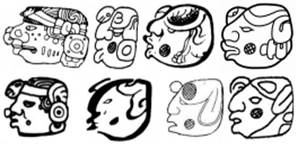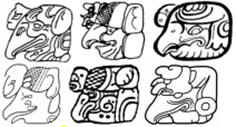![]()
![]()
![]()
![]()
K&H.p79.#4 = 25EMC.pdfp28.#5.16 K&H.p16.r2.c1 TOK.p33.r1.c3 BMM9.p20.r1.c1
AJAW AJAW AJAW AJAW AJAW.wa
![]()

![]()
25EMC.pdfp28.#5.10 = JM.p27.#3 MHD.ZB1.1&4 0168bv
AJAW AJAW AJAW

K&L.p27.#2
AJAW
![]()
![]()
![]()
![]()
![]()
K&H.p16.r1.c1 BMM9.p10.r1.c2 25EMC.pdfp28.#5.9 = JM.p27.#2 JM.p29.#2 25EMC.pdfp28.#5.14&15
AJAW AJAW AJAW AJAW AJAW:wa
![]()
![]()
MHD.ZB1.2&3&5&6 0168bt 0168dh
AJAW AJAW
![]()
![]()
![]()
![]()
![]()
![]()
K&H.p79.#5 TOK.p23.r1.c2 TOK.p23.r2.c1 BMM9.p13.r6.c1 25EMC.pdfp28.#5.3 = JM.p28.#3 KuppratApp.1
AJAW AJAW AJAW AJAW AJAW AJAW

![]()
![]()
K&L.p27.#1 25EMC.pdfp28.#5.11&12&13 = K&L.p27.#1.4&7&6 MHD.PJ1.1&2 1515st
AJAW AJAW AJAW
![]()
![]()
![]()
![]()
K&H.p79.#6 TOK.p26.r1.c4 BMM9.p19.r2.c1 25EMC.pdfp28.#5.5&6 25EMC.pdfp28.#5.7 = K&H.p79.#6
AJAW AJAW AJAW


![]()
![]()
![]()
K&L.p27.#3 25EMC.pdfp28.#5.2 = JM.p28.#1 25EMC.pdfp28.#5.4 MHD.BV1.1&2 T747a
AJAW AJAW AJAW AJAW AJAW -
![]()
![]()
BMM9.p17.r3.c3 25EMC.pdfp28.#5.1 = JM.p28.#2
AJAW AJAW AJAW
![]()
25EMC.pdfp28.#5.8 .
AJAW .
![]()
![]()
![]()
K&L.p27.#1.9 = 1515fh = Houston-IU.p65.pdfp12.fig3.7b Houston-IU.p65.pdfp12.fig3.7a
CPN Altar 41 pAb CPN Altar 41 pA CPN Stela D A4
AJAW AJAW ti.<13:AJAW> 10.AJAW
· Headband – the headband is a horizontal band at the top of the head. It can be associated with:
o A HUUNAL (= “Jester God”) element (e.g. K&H.p79.#6).
o An approximately circular cross-hatched element on the left, within the horizontal band.
· Variants (7):
o A. Stylized full form – features:
§ Top – the so-called “ben ich” element (an old nickname) = two small boulder outlines touching one another, horizontally:
· The one resembling the syllabogram po and the other resembling the Tzolk’in day name “BEN”.
· The “po” and “BEN” elements can be in either order.
I don’t know why the “po”-element has been nicknamed “ich”. There appears to be a theory that the “po”-element is a cushion, and the “BEN”-element is a bench, and the combination of a cushion and a bench hence represents “rulership”, as these would be what the rulers sat on. I haven’t seen any references in the academic literature to this theory, not even in older works from the early years of decipherment.
§ Bottom: a boulder outline with:
· A bold top half of left wall, ceiling, and entire right wall (same bolding as in TUUN) – a “cave”, or a bold left wall, ceiling, and right wall – a “symmetric cave”.
· A single, very slightly curved vertical band in the middle, from ceiling to floor.
· Two touching, slightly curved, “L-shaped” bands coming down from the ceiling, going under the middle vertical band, and then emerging slightly on the other side as two small “bumps” (“half dots”) – the double bands may be either to the left or to the right of the middle vertical band, which means that the two bumps can be either to the right or the left (respectively) of the middle vertical band (double bands on the right is perhaps more common). BMM9.p20.r1.c1 is unusual in that the two bumps have their own protector.
o B. Stylized reduced form: just the “ben ich” element of the full form:
§ This is always on top of other “main signs”.
§ The explanation is that this is actually the full form of AJAW, but another, slightly less tall, main sign is superimposed on top of it (between the full form AJAW and the reader), leaving the “ben ich” to stick out above the other main sign.
o C. Human head: often with a darkened dot on the cheek.
o D. Bird head: with a large, medium-long, “vulture” beak, with a hook at the end.
§ It’s interesting to note that Bonn doesn’t seem to have declared a code for the “vulture head” variant of AJAW.
o E. Mammal head: not very common.
o F. Right-side-up “AJAW face”: 25EMC.pdfp28.#5.8 is the only source which lists this as a variant of AJAW. All other sources recognize this (of course) as AJAW, but only in the context of being within a “blood cartouche”, when writing the day name AJAW. I’m not aware of this glyph being used to write the word ajaw (i.e. to mean “lord”) outside of the context of the day name.
o G. Full-figure –Houston-IU is a paper on full-figure glyphs:
§ Houston-IU.p64.pdfp11.para3: Understanding one’s place had visual correlates in gesture. In Classic Maya imagery, but also in eyewitness descriptions from the Colonial period, a right hand might extend across the chest to rest on the upper arm or left shoulder. This indicated “respectful salutation” (Miller 1983: 36) when a subordinate addressed a more important individual, usually a ruler (Figure 3.6; Seler 1904: 656–66; Tozzer 1941: 35).
§ Houston-IU.p64.pdfp11.para4: Several full-figure glyphs draw on gestures of social inequity, offering a clue that glyphs were understood as the servants of makers and readers (Figure 3.7). Copan Stela D, a monument erected on July 23, 736 CE, shows a day-sign Ajaw, “lord,” at position A4 in the text (Figure 3.7a). The inscription accentuates the division of glyph blocks into two distinct signs by a curious “unsociability”: adjacent glyphs tend to face away from each other. Yet comity is there in other ways. A few glyphs clutch their immediate neighbor, and the Ajaw sign brings his hands up in customary obeisance, but now with his left hand on his right shoulder (that pose is probably because the sign faces backwards, for it reverses the usual orientation of hands).
![]()
![]()
JM.p28.#4 = Graham
YAX Lintel 3 J1
a.<ja:wa>